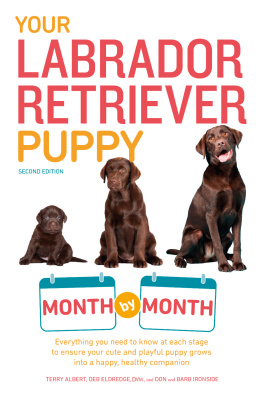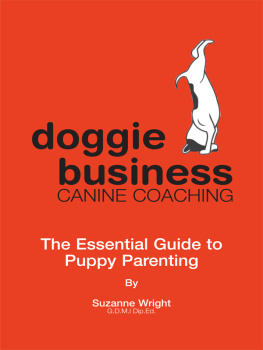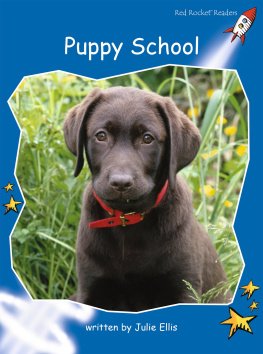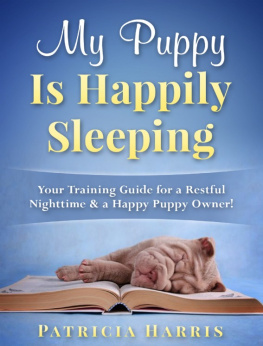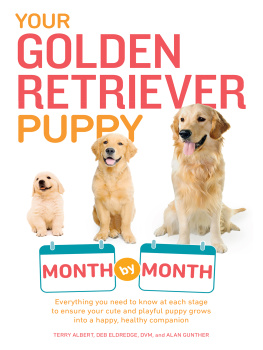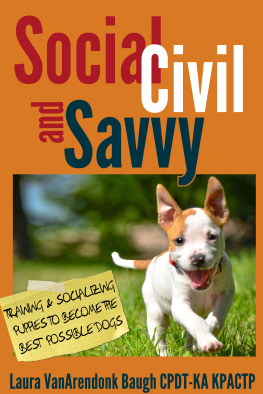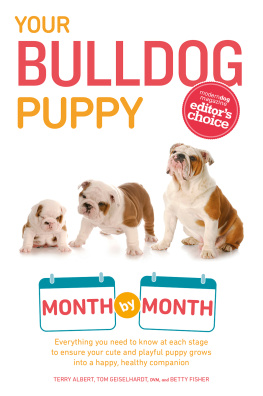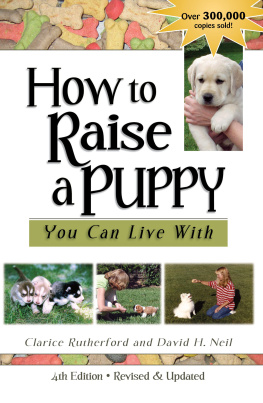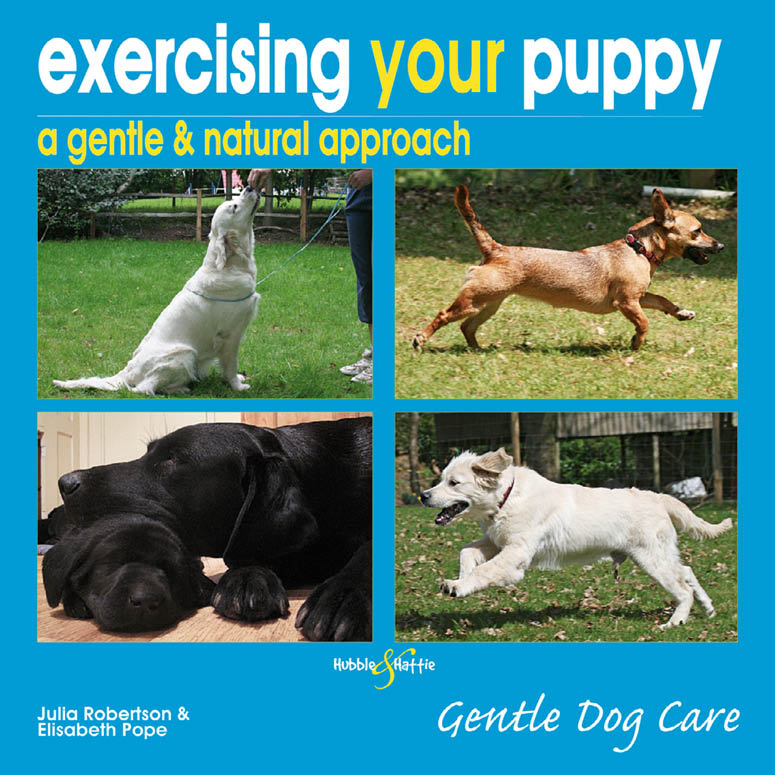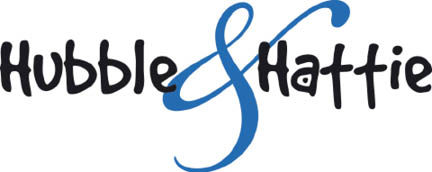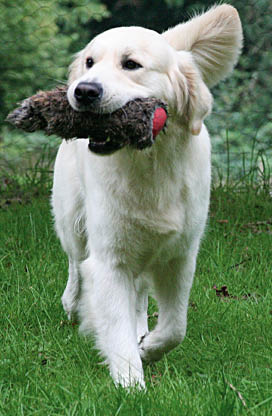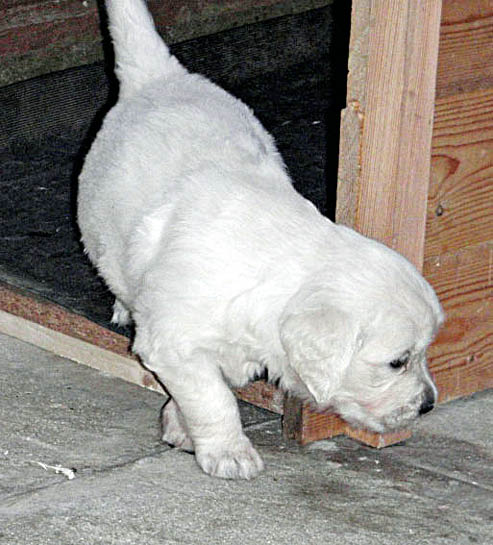exercising your puppy
a gentle & natural approach
Julia Robertson & Elisabeth Pope
First published in hardback format in July 2011
First published in eBook format in June 2014
Veloce Publishing Limited, Veloce House, Parkway Farm Business Park, Middle Farm Way, Poundbury, Dorchester, Dorset, DT1 3AR, England. Fax 01305 250479 e-mail .
Print ISBN: 978-1-845843-57-1
eBook ISBN: 978-1-845845-95-7
Julia Robertson, Elisabeth Pope & Veloce Publishing Ltd 2014. All rights reserved. With the exception of quoting brief passages for the purpose of review, no part of this publication may be recorded, reproduced or transmitted by any means, including photocopying, without the written permission of Veloce Publishing Ltd. Throughout this book logos, model names and designations, etc, have been used for the purposes of identification, illustration and decoration. Such names are the property of the trademark holder as this is not an official publication.
Readers with ideas for books about animals, or animal-related topics, are invited to write to the editorial director of Veloce Publishing at the above address. Typesetting, design and page make-up all by Veloce Publishing Ltd on Apple Mac. eBook code and design produced in-house by Veloce Publishing Ltd.
www.hubbleandhattie.com
The Hubble & Hattie imprint was launched in 2009 and is named in memory of two very special Westies owned by Veloces proprietors.
Since the first book, many more have been added to the list, all with the same underlying objective: to be of real benefit to the species they cover, at the same time promoting compassion, understanding and co-operation between all animals (including human ones!)
Hubble & Hattie is the home of a range of books that cover all-things animal, produced to the same high quality of content and presentation as our motoring books, and offering the same great value for money.
Disclaimer
Please note that no puppy was deliberately frightened during photographic sessions. The images used to depict puppies feeling worried about specific situations were taken whilst the puppies were exploring the novel environment of the studio setup. These images were later modified to enable us to illustrate the points we wished to make. Please also note that all body language is context-specific, and individual signals can mean different things in different contexts.
hubbleandhattie.com
Contents
Foreword & Introduction
Foreword
I am so pleased to write the foreword to what I think is such an important book for anyone getting a new puppy.
Sometimes, through a lack of knowledge, we can misinterpret what is good exercise when rearing a puppy or young dog. This book offers practical advice and information for everyone who has or is planning to have a puppy or young dog, and is looking to give them a good start!
The first puppy I had I allowed to go up and down stairs as soon as he could manage it, which I now know is inappropriate for a young dog. This book gives us an insight into how our day-to-day routine could affect how our puppies develop.
This is a really important book, and I thank Julia and Liz for writing it.
Val Foss
Valerie Foss is an international dog judge, who has judged all over the world. In 2010 she judged Best In Show at Crufts, and has written eleven books about dogs, mainly Golden Retrievers.
Introduction
Why is it important to exercise your puppy appropriately?
It is impossible for anyone to prescribe an individual exercise regime for a puppy/handler without knowing or seeing the animal, as even puppies from the same litter can develop at different rates. This book is intended to ask some questions about exercise and the puppy, provide some answers, and offer some indicators regarding growth and development of puppies, so that you, the reader, can make informed decisions and compile an exercise regime suitable for your puppy.
If there was a prescriptive and straightforward way to exercise all puppies, we could receive these definitive instructions when we take home our first puppy, and repeat the exercises for all subsequent arrivals. Unfortunately, this is not the case because, as already mentioned, puppies are all built differently, their construction is different (within breeds as well as breed-to-breed), their attitudes are different, and physical maturity is reached at different stages in their lives.
So, just why is it important to exercise puppies appropriately?
There are many reasons why appropriate exercise is important, not least of which is that it is a good foundation for developing spatial awareness and natural balance, which will benefit all dogs throughout their lives.
Why is it important to understand how your puppy grows?
Various studies show that growth plates within a puppys long bones (cartilage at the ends of most bones in young animals) do not close until a puppy is 12 months old, and 18 months of age in giant breeds.
What are the implications of this? Well, for one, it means that as full bone development does not harden until maturity, your puppy will be walking on the soft sections within the long bones, which are the femur (or thigh bone), and humerus (the long bone in the forelimb).
With pedigree dogs you should have an idea if not from your breeder then from information available through breed clubs or kennel club websites of when the breed you have chosen is expected to reach skeletal maturity. With crossbreeds, if you are lucky enough to know the parentage of your puppy, always consider the bigger of the two parents when assessing the potential growth and mature size of your puppy; theres always a chance that she will grow as big as one of her parents.
At six weeks this puppy is already displaying spatial awareness and natural balance, which will continue as she develops.
A brief explanation of the skeletal and muscular systems
Bones need appropriate physical stresses to create strength within the shaft, but only the right amount. Its not only the growth plates that have to be considered, as the cartilage that protects the bones and provides concussion within the joint is nourished by the synovial membrane. If this membrane which is not in any way robust is compromised by over-stressing (excessive pounding or twisting), the cartilage will be adversely affected.
Surrounding and supporting these synovial joints are the soft tissue, ligaments, and tendons attaching to muscles. It is these structures that maintain joint integrity which, if compromised, will impact on the joint as a whole. Some muscles cross two joints so if theres muscular dysfunction two or more joints could be affected, with subsequent compensatory issues. Any injury however small or over-exertion can affect muscular balance which, in turn, will impinge upon the integrity of articulating joints: ie a front end injury can affect back end movement.
When considering a puppys development, neural development is of significant importance, as development of good neural pathways within your dogs muscles, tendons and ligaments are vital. Your puppys spatial awareness the where she is in the world is something that requires stimulation. She needs to know that she has a front and a back end, and how they should be co-ordinated to create good movement, using correct patterning (how the muscles work together to allow movement), and the stability provided by the deep muscles as support. This process can be greatly influenced by exercise and the type of exercises carried out, as well as enhanced by appropriate massage techniques. Living with us in our homes, a puppy is not in her natural environment, so we need to use methods that will replicate, as far as possible, how a puppy would have developed.


